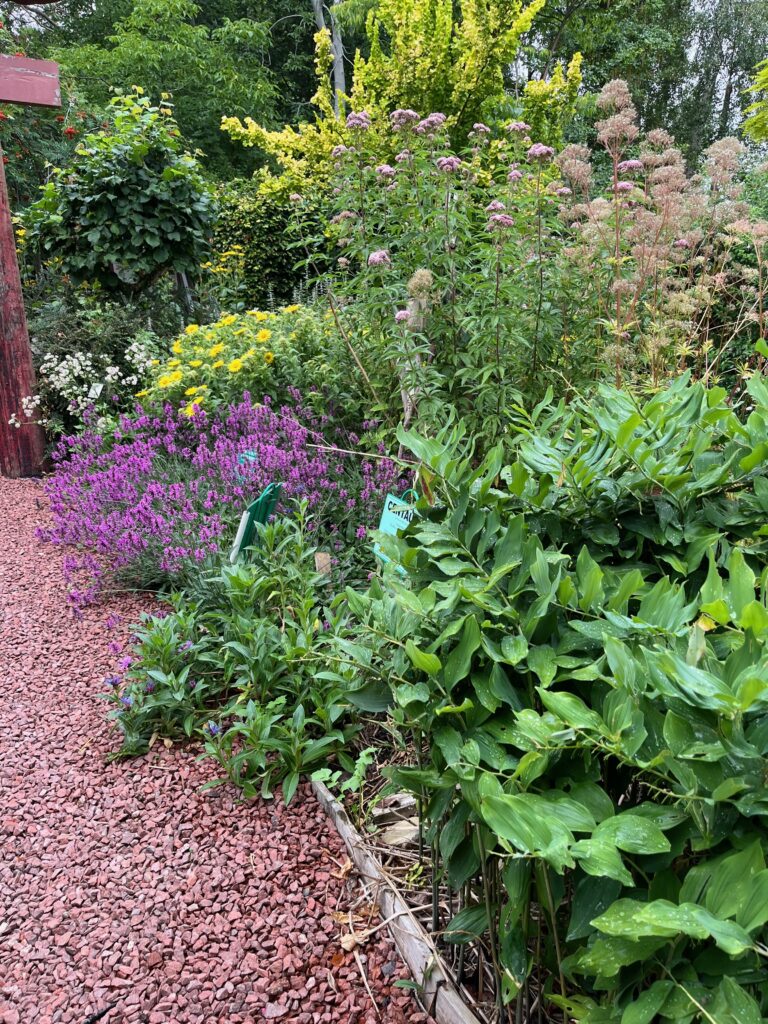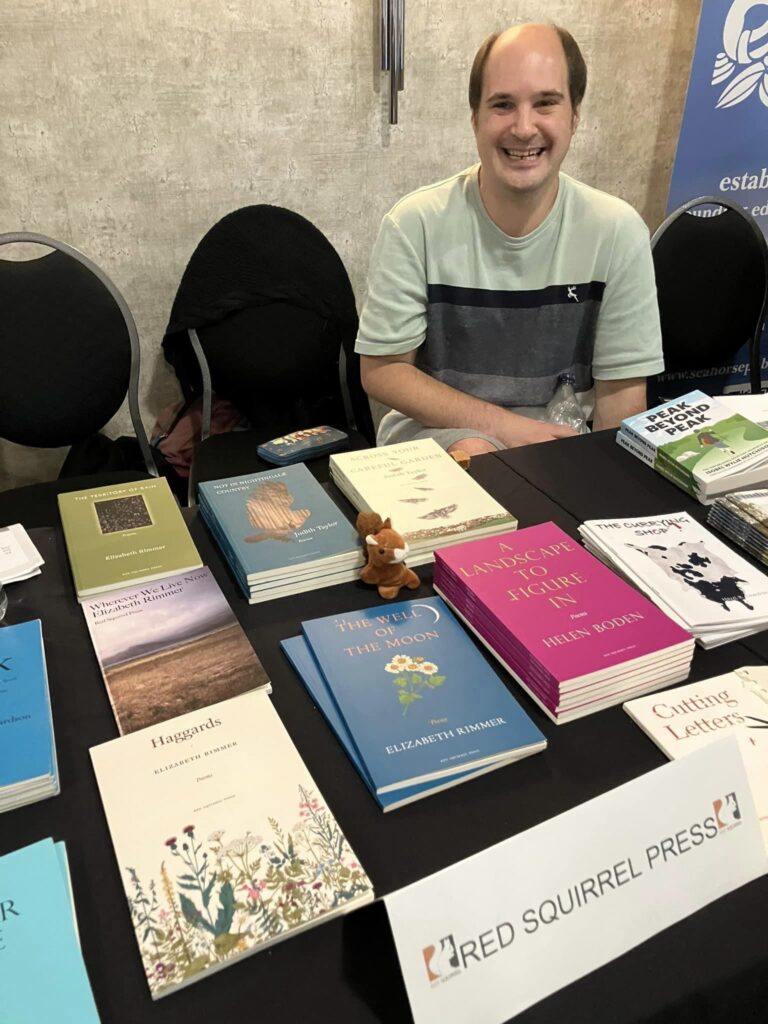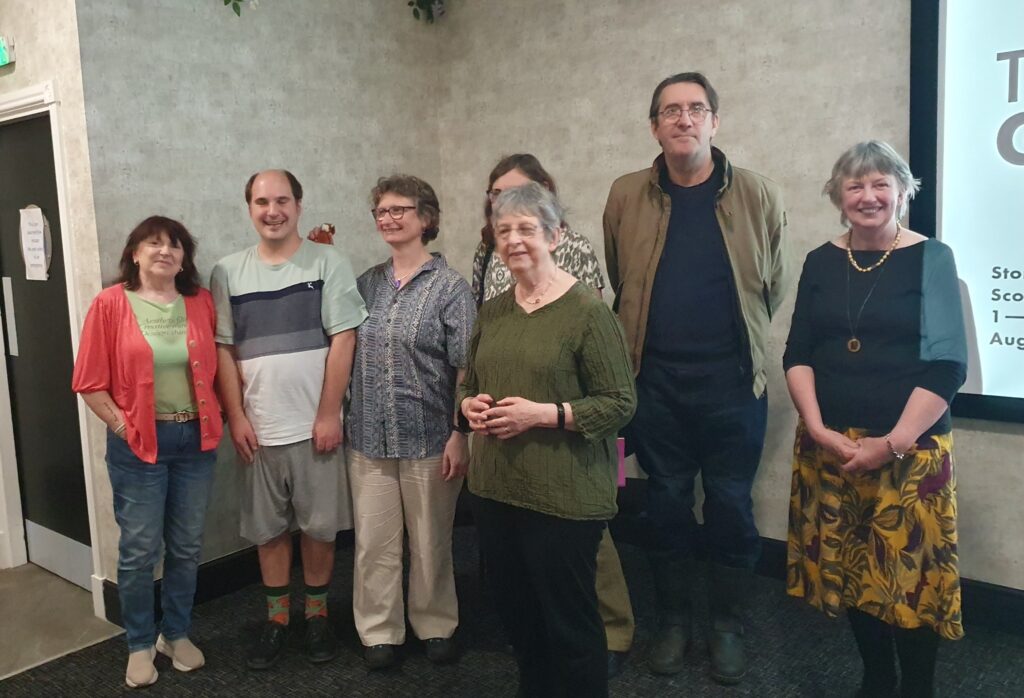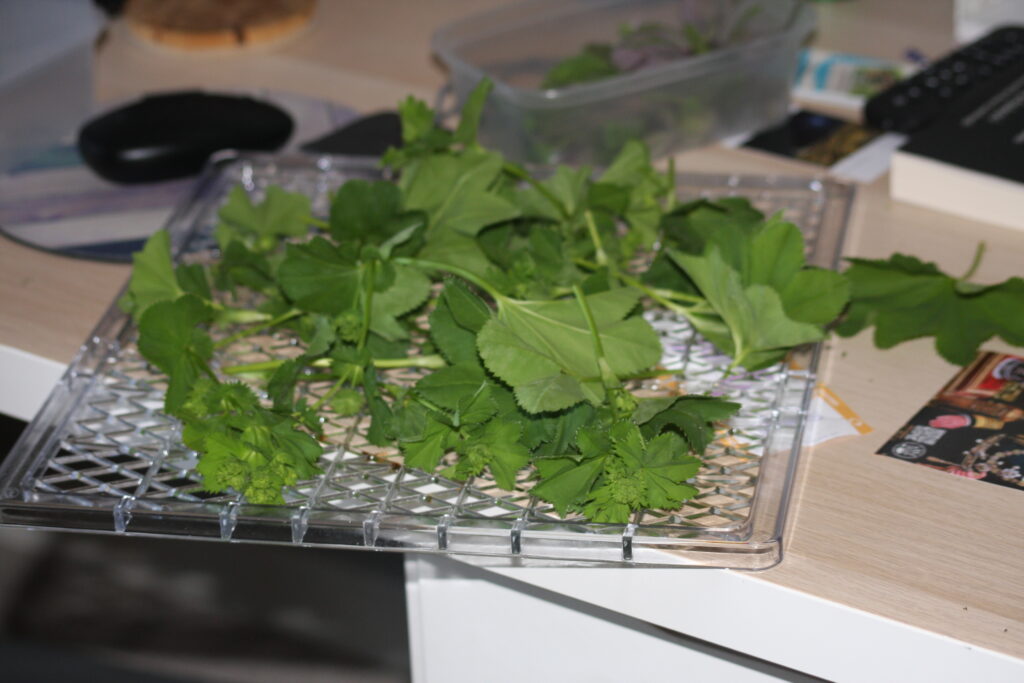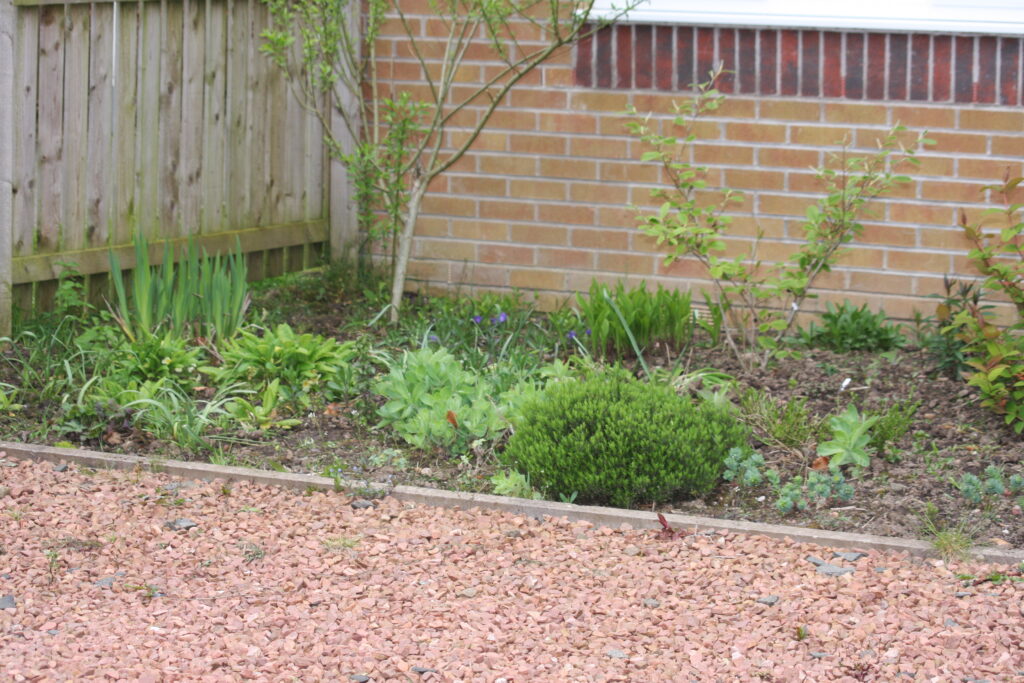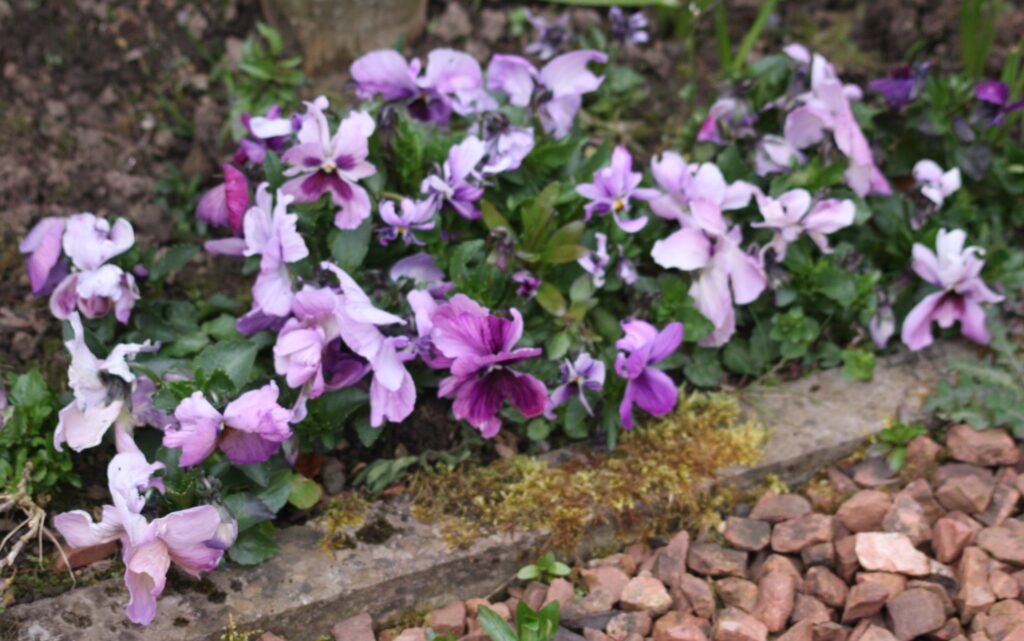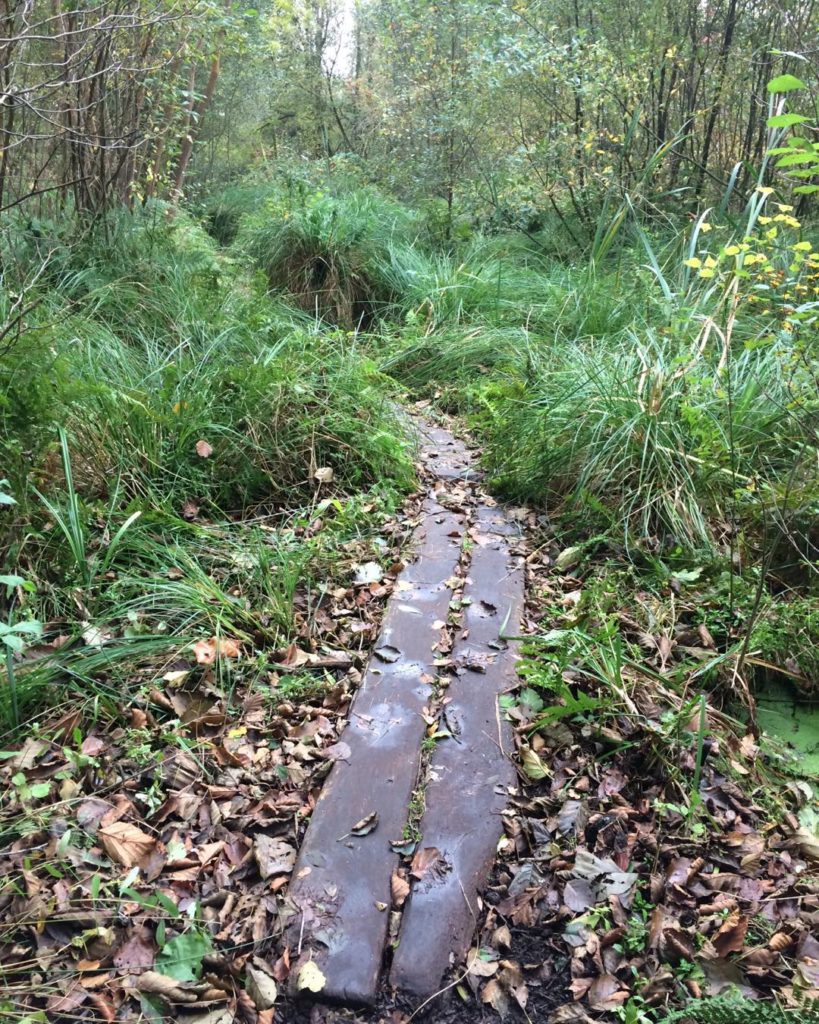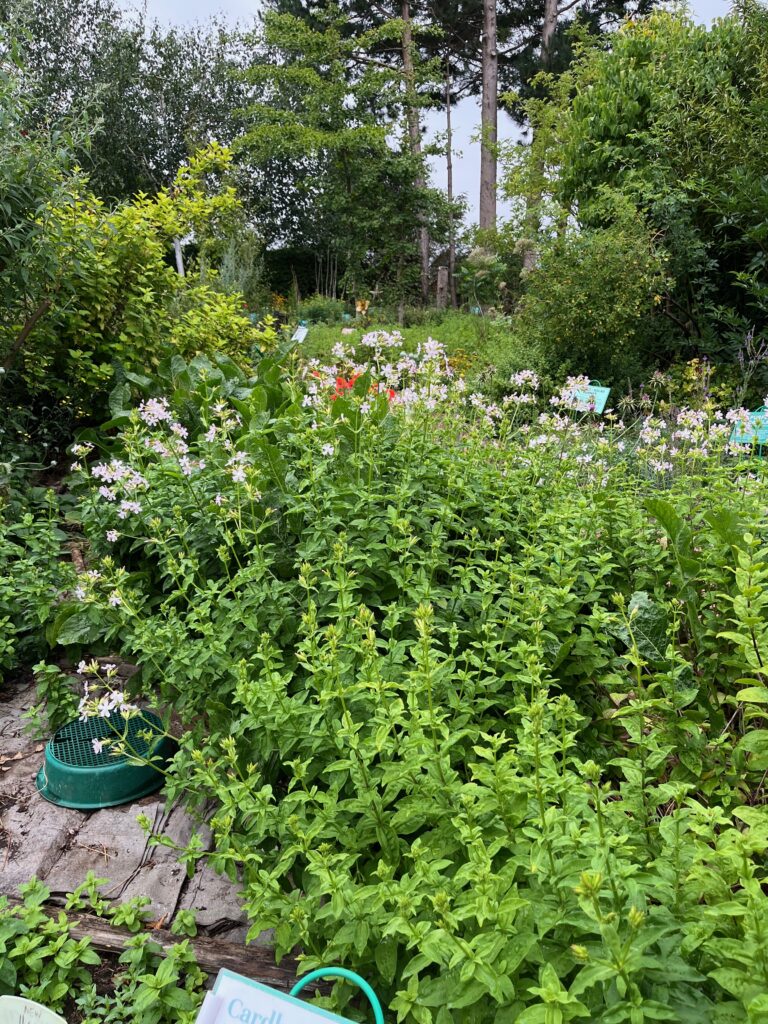
We’ve been away for a holiday – and a good rest after a turbulent time in the last eighteen months, and on our way home, I achieved a life-goal (as my younger grand-daughter says) by getting to visit Dilston Physic Garden in Corbridge. It’s a very pleasant wee town, and the garden is a little way outside. I thought it felt familiar, and I have just tracked down a reference in Mary Stewart’s The Last Enchantment, where Merlin goes to visit a scribe, Blaise, who lives in a herb garden near a mill, sufficiently sheltered by the northern hills that he can grow grapes against a south-facing wall, just outside a town at the Cor Bridge.
The physic garden today is as lush and productive as the fictional Blaise’s, but rather less orderly I think. There are plants everywhere, growing into each other, overhanging the paths, flowering and flourishing. I posted pictures on Instagram, saying that my garden would look like that, given half the chance – it very nearly does, but at Dilston they have taken it to the max. The site is over two acres and they say they have 700 plants growing there. The plants are all properly labeled, however, with fascinating notes about their uses, and though it looks wild and unrestrained, everything is well looked after. I was particularly impressed with the mistletoe flourishing on one of the apple trees in the orchard – I have tried this myself, and it is very difficult to get the seeds to take.
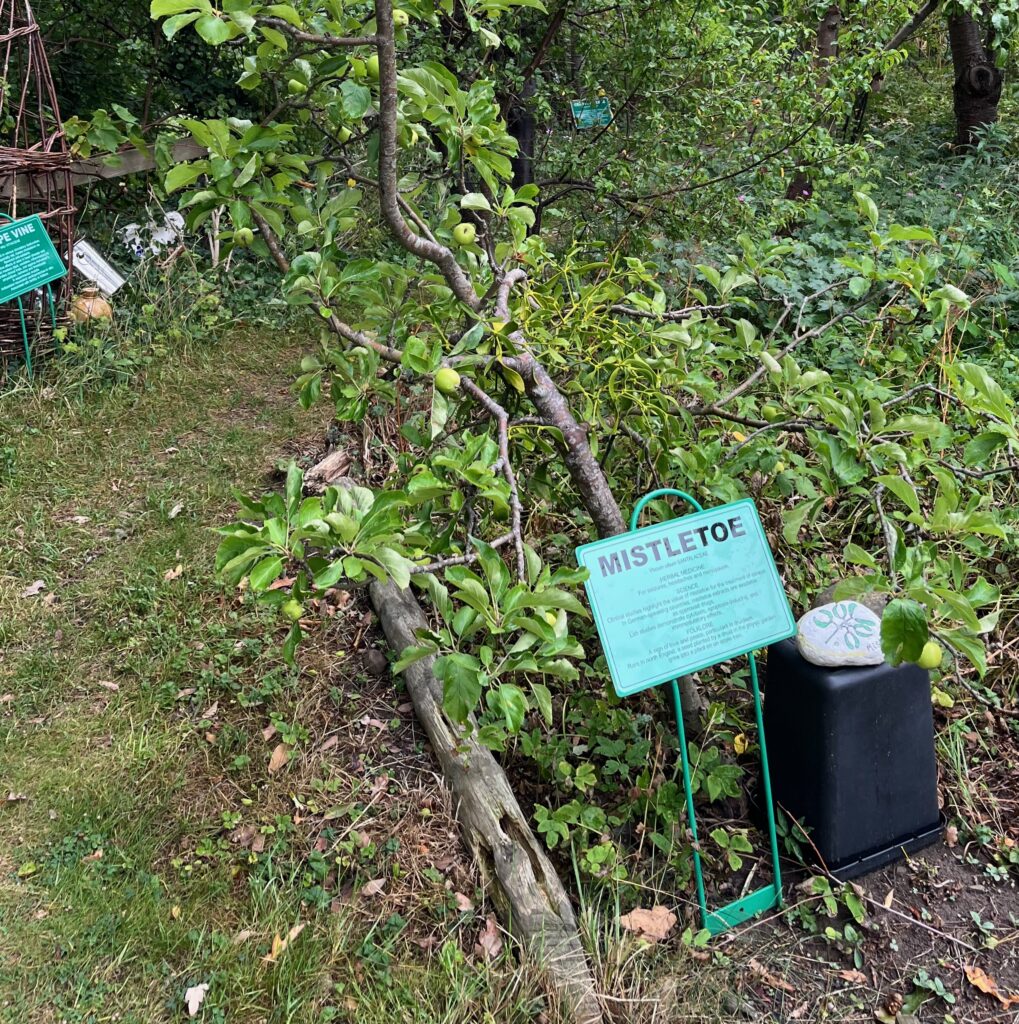
The garden is designed for many different users, with a meditation area and space for children to play and explore as well as educational areas. There are plants for pollinators, and bees, and discussions of all the uses people make of herbs – scientific trials of medical uses, cooking and dyeing and folklore. The charity runs courses and events, and there is a shop staffed by people who will introduce you to the garden and help you get the most out of it.
The garden is up a steep footpath, and it isn’t level, so it can be challenging to walk around, but my goodness it’s worth it. And if you can’t manage it, their website is beautiful!
